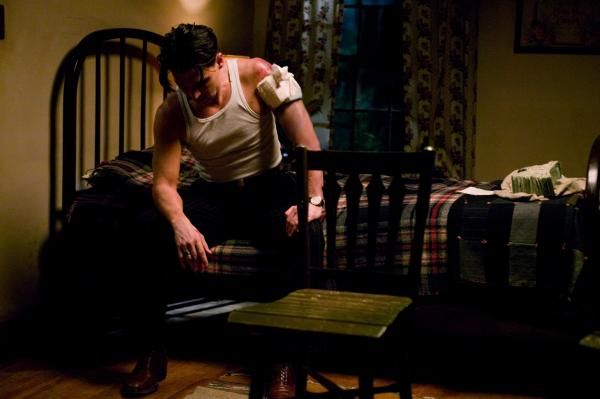
Household classics everybody has seen except you. We all have these and this was mine. I had avoided it for the longest time because many of the most iconic moments in it were spoiled for me in various horror docus and also because every other Carpenter classic I've seen I find disappointing (ESCAPE FROM LA is my favourite) but four days ago was the right kind of day, the stars were in all in the right places, so I figured what the hell. I can always summon an angry mob at my doorstep by admitting to not having seen THE FLY.
I've steered clear of Halloween threads for years so I'm not familiar with the criticisms usually leveled at the film but by reading a few of the negative reviews here, about how the dialogue is banal and how nothing important happens for long stretches of time and how Carpenter is content to plaster his own simplistic score over every other scene, I must say "what a crock of sh-t".
Hawksian (Howard Hawks of RIO BRAVO and THE BIG SKY) in how a string of main events is relegated to the margins of a story allowed to breathe and expand without Carpenter feeling the need to flood those expansions with incessant plotting, Halloween is the kind of film that tries to break free from the generic baggage associated with the type of film it is and yet in a stroke of irony it's a success because of those expansive qualities that elevate it above genre. Carpenter's imitators removed those elements by which the horror is allowed to seep in the background of a movie because moneyhungry producers have apparently decided that horror must be literal and obvious and beat audiences over the head with cheap jump scares but this is ferocious filmmaking unmatched in the slasher field to this day.
This is a film where the viewer is not called to identify with the characters because they mouth off their likes and dislikes but simply and more importantly because he's allowed to inhabit their environment for the duration of the movie, yes even those quiet uneventful moments where nothing happens and a girl is outside doing laundry and kids watch THE THING FROM OUTER SPACE on TV (Hawks again) because this is suburban life between the cracks and Halloween is all about the invasion of this quiet peaceful normalcy. And unlike Mario Bava's BAY OF BLOOD from '71, a prototype slasher usually mentioned by afficionados as the first modern slasher flick perhaps in an effort to take something away from Halloween, Halloween does domestic invasion in its own elusive shadowy way.
Flawed though it may be, I like Halloween so much because it lingers in the memory, because it conjures up an image of a sleepy suburbia after dark where trick-or-treating kids dash fleetingly before the camera and neighbors refuse to open the door to distraught victims and then violates this image of white fence quiet for the sake of meanness or maybe no apparent reason at all. I like it for the slow steadicam shots through lines of houses and front lawns and for how closed space is distorted by widescreen lenses and for its blueish late-night atmosphere. I like it for the sparse killings and how Carpenter doesn't allow it to become a bodycount movie.
For a slasher cornerstone it's amazing how it never veers far from the fundamentals of classical horror and how atmosphere remains its strongest card. The closet scene in the end is a good example of this: it's haunting not because of any actual violence or visceral jolt but for the simple brilliance of the mute masked killer and the hysterical victim, for the closed space and the light swinging from side to side. It's all dreamlike/theatrical in a weird roundabout way that makes sense in a guttural level. And then, as if on cue, Lauri rises at the same time with Myers out-of-focus in the background and the pieces click into place and instead of this feeling contrived, it feels just right. It's a choreography for camera and killer.
Myers stands behind the camera and looks at his victims and then goes away. He stands with the bedsheet over his head in the doorway for a full minute without saying a word. He nails a guy on the wall with a knife (it can't happen but it's a great image to care about realism). It's all a bit unrealistic if you think about it and choreographed in the sense that people play against the camera to create beautiful tableauxs. This is slasher theater in the Japanese sense of the term.
Or take the scene where Dr. Loomis is driving to the insane asylum to check on Myers. Most of it is shot from inside the car and we get liberal splashes of yellow lighting under the dashboard for no reason at all (it looks cool!) and we see strange white figures in the night behind the fence and then Loomis is saying to the nurse driving the car something like "what are they doing outside?". Did the inmates break out? There's a *beep* of possible terror mystery and suspense just over the fence but Carpenter's genius never allows it to be drawn to the center of the movie so we can process it logically. It remains in the periphery of our vision, a nagging suspicion that "something is seriously f-cking wrong, man", a possibility of horror vaguely hinted and shown but never fulfilled. It's not really frightening but the scene haunts me four days later.
9/10











